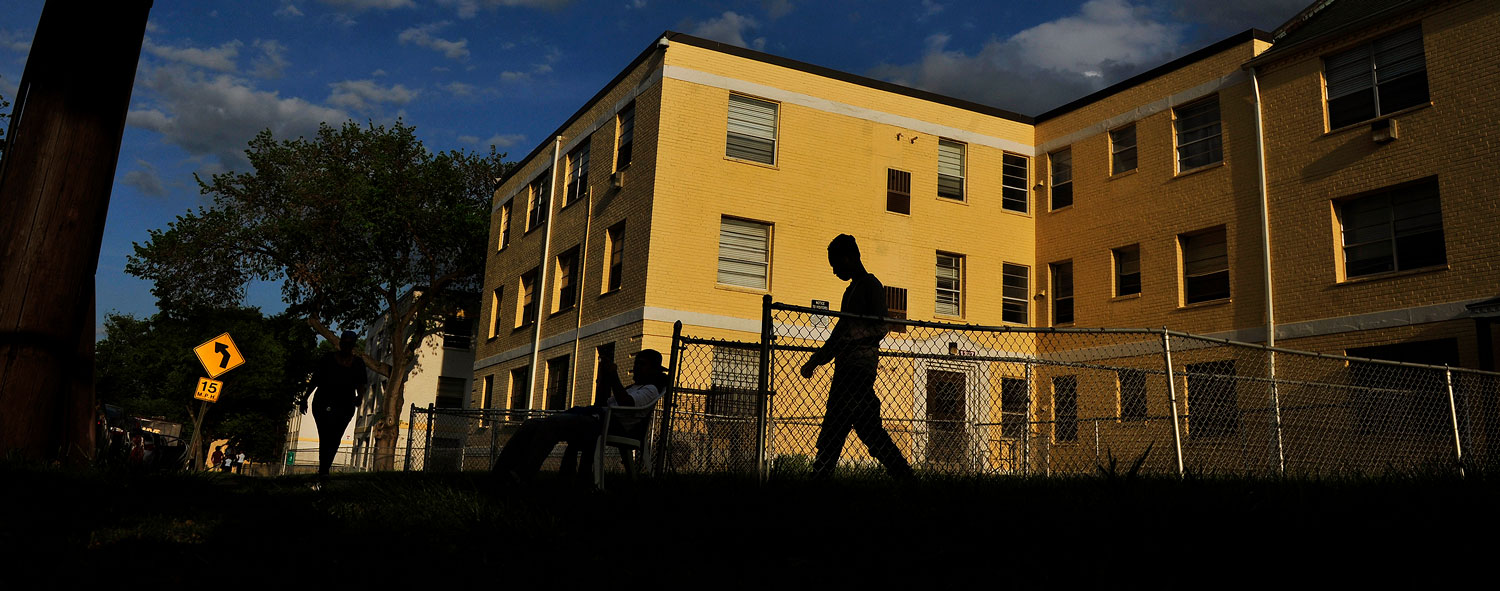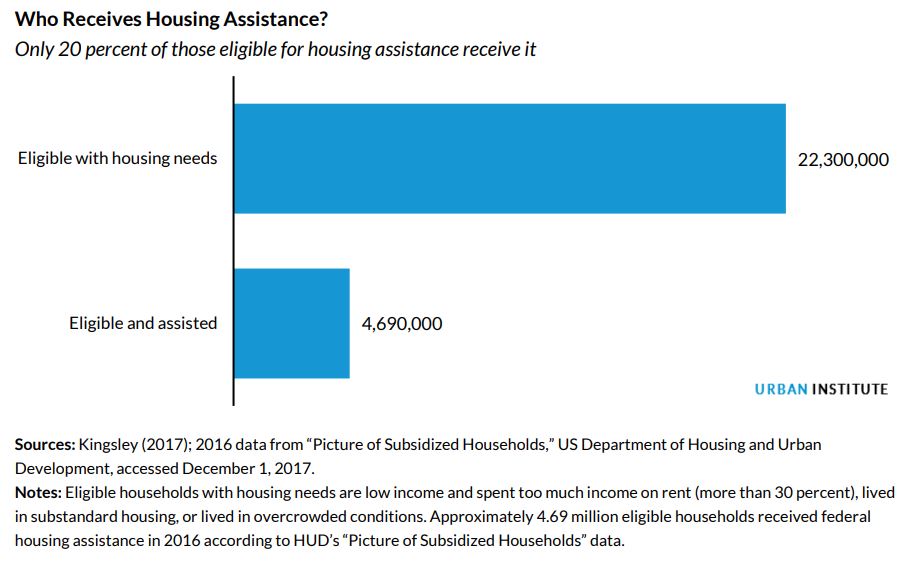
<p>Brookland Manor is a sprawling, Depression-era housing complex that straddles the divide between what the District once was and what it will be. Perched atop a hill overlooking Rhode Island Avenue, its tenants are overwhelmingly poor, recipients of vouchers that subsidize their housing and in the crosshairs of a financial group that plans to redevelop the property. Photo by Michael S. Williamson/The Washington Post via Getty Images.</p>
Federal safety net programs are intended to protect the most vulnerable Americans—such as the elderly, people with severe disabilities, and young children—and stabilize those who have fallen on hard times and help them move to solid ground.
Housing assistance plays a critical role in the safety net, aiming to ensure families who receive assistance have decent, safe, and affordable housing. But unlike other safety net programs, housing assistance is not an entitlement, which means it does not provide benefits to all who are deemed eligible. Available assistance falls short of the need: only one in five renter households who qualify for public housing or Housing Choice Vouchers receive the help they need.

Instead of expanding access to housing assistance, the administration and congressional leaders are proposing major funding cuts and policy changes that could make the situation worse.
What new policies and proposals mean for affordable housing
The United States is in the worst affordable housing crisis in decades, with more households competing for an increasingly limited supply of rental housing. The Tax Cuts and Jobs Act enacted last month will exacerbate the situation. The National Low Income Housing Coalition expects the enacted changes will threaten the construction of affordable housing and undermine the Housing Trust Fund, reducing the number of affordable rental homes available.
Our new report shows that recent proposals, including the administration’s proposed fiscal year 2018 budget, threaten deep cuts and significant changes to our limited supply of housing assistance. Even families who have received assistance could face housing instability and increased rents.
Other proposals, like imposing work requirements, minimum rents, and time limits, focus on moving households to work and off assistance. But these proposals ignore that able-bodied adults and families with children constitute an increasingly smaller share of those who receive housing assistance. Most recipients are elderly or disabled adults.
Even though housing authorities have experimented with these types of strategies for many years, there is little evidence on how these programs affect assisted households, housing agencies, participating properties, and communities.
Why we should expand access to stable housing
Any reduction in federal funding for public housing or vouchers threatens the well-being of millions of low-income households. The administration’s proposed budget cuts paired with the possible loss of affordable units under the Tax Cuts and Jobs Act would leave many low-income households at risk of housing instability or worse.
We know little about how other proposed reforms to housing assistance—minimum rents, rent increases, time limits, work requirements, and others—might affect the availability of housing assistance and the well-being of families who depend on it. But we do know that housing assistance plays a critical role in stabilizing low-income households and helping them move to solid ground.
Instead of cutting funds for assistance, the administration and Congress should be considering ways to expand access to stable, affordable housing. And before proposing policy reforms for housing assistance programs, we need to expand the evidence on what works and what doesn’t, focusing on how these changes might affect current recipients and those most in need of assistance.
Let’s build a future where everyone, everywhere has the opportunity and power to thrive
Urban is more determined than ever to partner with changemakers to unlock opportunities that give people across the country a fair shot at reaching their fullest potential. Invest in Urban to power this type of work.